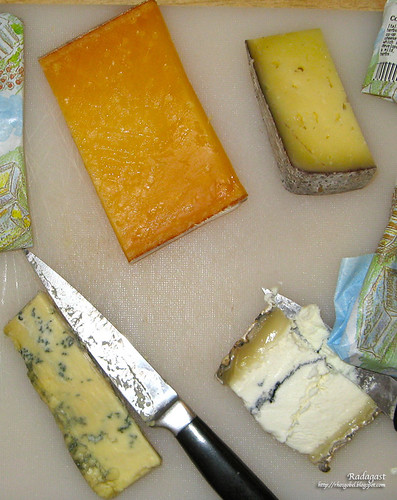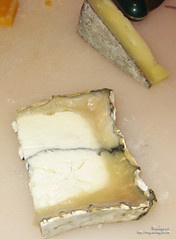The idea is a great one: there are many reasons why students might want to come and see instructors outside of class, and office hours give all students an opportunity to do just that. So, in my dream world, I would sit in my cozy office chair sipping tea while student after student came into my office asking thoughtful questions about biology and my advice on transfer possibilities (and bringing me artisan cheese to sample).
But in reality, office hours quickly turn into just another hour to get work done. Students almost never came by, and when they did it was usually for a few questions that were quickly answered before the student went on their way. Oh, sure, anytime there was a major assignment due a handful of students would come by to ask about it, but that was at most four or five students every few weeks (I tend to have about 70 to 100 students a semester in my courses).
The lack of student attendance was frustrating, because I knew they could use help (shockingly, they don't all score 100% on my exams, despite my amazing in-class instructing), and I also knew that they wanted help, as there was always a constant chant of "Can you hold a review session?" whenever an exam came up. I often would hold a specially scheduled review session, while in the back of my mind thinking, "Wasn't that what office hours should have been for?".
And then last year it clicked. Students desperately want to go to review sessions, but most couldn't care less about office hours. A quick e-mail to my dean confirmed that there is no requirement to actually call office hours "office hours", and an idea was born: I no longer hold four office hours a week; instead I hold four hours worth of review sessions each week.
I hold the review sessions in the lab I teach my courses in, scatter the hours through the week (to minimize scheduling conflicts), and publish the hours on my syllabus. I also don't just sit there and wait for student questions; each week I come with prepared slides that list what I can go over that day (e.g., what I think are tough topics), a few new things to talk about (e.g., a preview of material to come, or another example of something we've talked about), and a set of test-like questions from the prior weeks' content aimed at promoting discussion of core topics. I then ask the students what they want to do, and we go from there.
The weekly review sessions have been a huge hit. For the primary class I teach (majors' biology), I had four students attend during the first week of the semester (I've never had students come to office hours during the first week to ask about anything other than enrollment issues), in the third week I had seven students attend (even though I had cancelled both review sessions due to being off campus, and only announced that I would be holding one an hour before it was scheduled to start), and last week I had 14 students show up. This week I haven't even held all the review sessions yet, and I've already had 13 students show up.
In the first four weeks of the semester I had more students come to my review sessions than I typically have come to my office hours in an entire semester. The students are active and engaged; most stay for the entire time asking me questions and working on my sample questions. I'm also getting lots of positive feedback ("These are really helping, Prof. Radagast"). And, as an added bonus, since I hold the review sessions in the lab room, students know that they can use the review sessions to give themselves extra time to look at lab specimens, if they need it.
One challenge to this concept is that the review sessions must be specialized for each class. So, I had to split up my office hours to target each class I teach (luckily I only teach two separate courses), and I've made it clear that I'm happy to schedule office appointments for anyone who can't make the review sessions for their class. It's not ideal, but the extra attendance and engagement by the students make it worth it.
I think there are three interacting factors that contribute to the success of the review sessions:
- The name - Students think about "office hours" in a completely different light than they do "review sessions".
- The location - Instead of walking into my office and interrupting me while I'm doing some probably meaningless, but important-looking task, students instead walk into a room designed for teaching, and see me sitting at the front doing nothing but waiting for them to arrive1.
- The preparation - While students end up asking me lots of questions, at the start of each session I usually just get blank stares. Having a few slides prepared with sample test questions, extra content, and a list of what I think is tough helps break the ice and get the session going. The sample exam questions are especially liked, and much of our time has been spent going over them.
As an added bonus, I'm enjoying the time much more. Instead of guiltily doing administrivia during office hours, I'm now interacting with my students and helping them learn the content. Which is, after all, why I'm here.
1 Or, more likely, they're waiting at the lab door and see me rushing from my office to the lab 15 seconds before the review session is scheduled to start.







